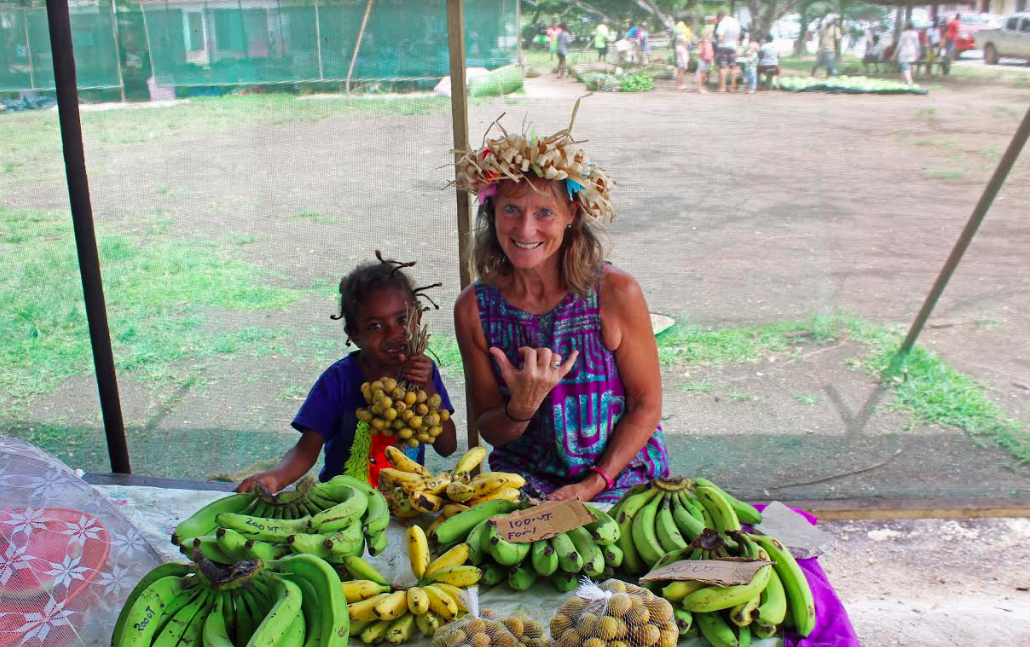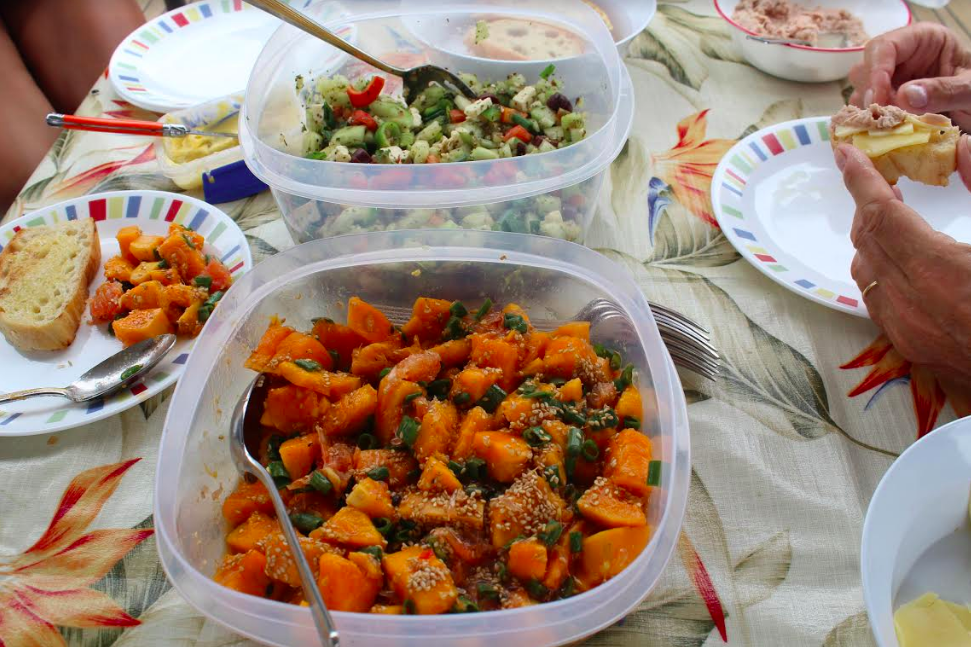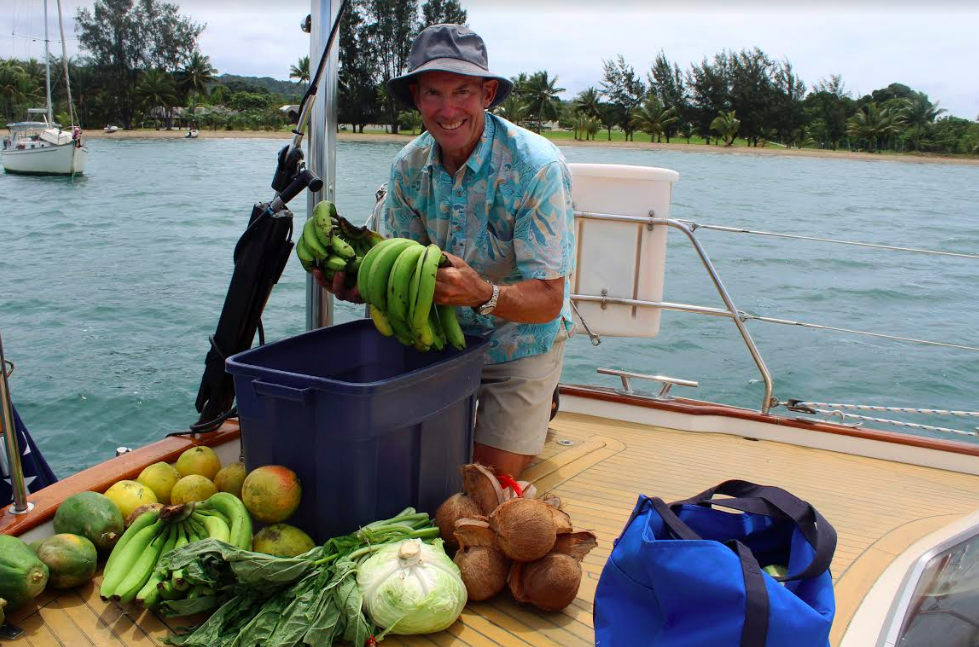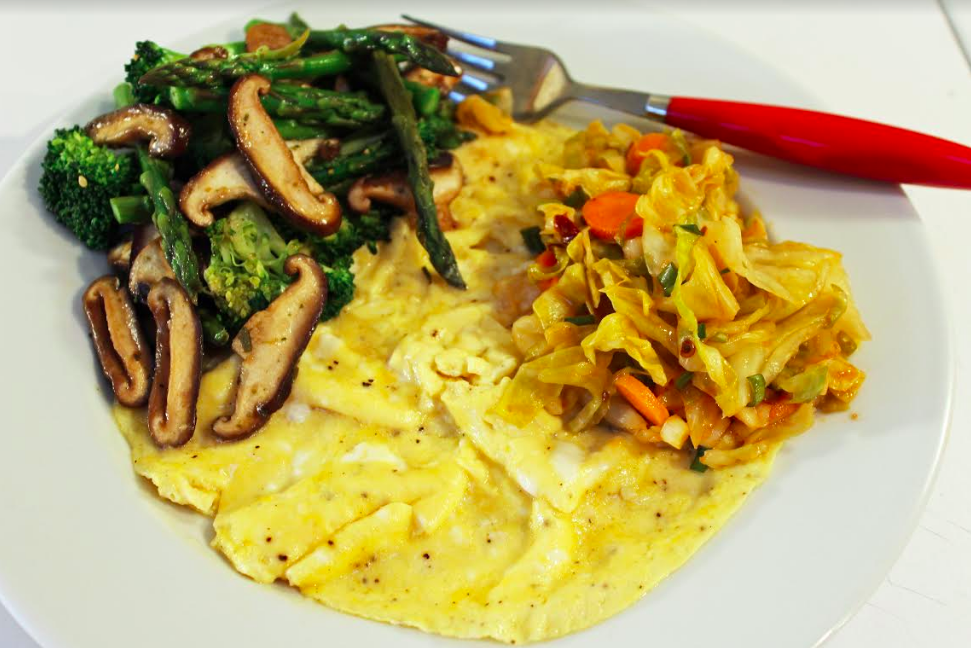Inspired by her cruising and cultural experiences around Vanuatu, culinary columnist and acclaimed offshore instructor, Amanda Swan-Neal, provides delicious papaya and fish recipes, along with a tutorial on making kimchi.

After entering the Banks Islands in Vanuatu and clearing customs at Sola, we were concerned with forecasted fresh south-southeast headwinds for our next passage, a 35-mile channel crossing to Gaua Island. In order to avoid the worst of the conditions, we set sail at 6:00 a.m. Unfortunately, we found ourselves battling headwinds with gusts to 28 knots for three hours before getting into the wind shadow of Gaua.
Both C-Map and Navionics show very little details for Gaua’s coastline, but thankfully the Rocket Cruising Guide includes satellite images of Matanda Bay and a series of waypoints to a picturesque anchorage. We hadn’t even gotten the anchor down before a dugout canoe came to greet us. An exuberant Ni-Vanuautu introduced himself as Son #2 Michelle, welcomed us to Matanda Bay, and invited us to visit ashore. He explained that his older brother was a chief and that his father was the paramount chief of the island.
Island Hospitality
Upon landing at the beach, we were guided by Michelle and his wife, Ennette, to a very small and tidy three-family compound. Michelle asked if we’d like to visit his parents who were working in their mountainside garden, and after a 20-minute scramble up a steep dusty bush track, we were delighted to meet chief Richard and his industrious and sturdy wife Madeline.
We soon realized that gardening here is extremely demanding. First, the bush has to be cleared. Then a variety of root crops are grown in succession, along with shade trees such as papaya and bananas. Once the soil is manageable, familiar and nourishing plants such as bell peppers, tomatoes, chili, spring onions, local cabbage (more like a large leaf hibiscus), cucumbers, and pumpkin are grown. With no access to fertilizers, compost, or a steady water supply, the soils natural nutrients diminish. Thus, more bush is cleared to create a new gardening crop rotation cycle.

Our crew was offered a bounty of fruit and vegetables. And although we only asked for enough for dinner, we ended up with an overly generous supply. Salads are always welcome aboard, and the following was well received.
Papaya Salad
This bright fresh salad goes well with the following fish recipe served with brown rice or quinoa.

1 ripe papaya – diced
4 shallots – chopped
1½ tablespoons lemon or lime juice
1½ tablespoons fish sauce
1 tablespoon sugar
½ tablespoon sesame seed oil
1 clove minced garlic
Gently combine all ingredients. Serves four.
Asian Honey Grilled Fish
4 fish fillets
1⁄4 cup honey
1⁄2 small white onion – chopped
Juice of 1 lime
2 tablespoons soy sauce
2 tablespoons hoisin sauce
1 fresh jalapeño pepper – seeded and minced
2 garlic cloves – minced
1 teaspoon fresh ginger – minced
In a bowl, combine honey, onion, juice, soy sauce, hoisin sauce, garlic, jalapeno, and ginger. Stir to mix well. Add fish and marinate at least 2 hours. Grill fish for 5 minutes, turn and grill another 5 minutes or until the flesh is flaky when tested with a fork. Serves four.
Exploring Vanuatu
From Matanda Bay, we wove our way south visiting numerous anchorages until we arrived in town of Luganville for our expedition crew changeover. Luganville is Vanuatu’s northern main trading town, with a long languid main street running parallel to the bustling waterfront. During World War II, the United States maintained a large naval base here. A few of the Quonset huts are still in use about town—our favorite is an eclectic curry restaurant.
The population is quite diverse with many Ni-Vanuatu from the outer islands working in commercial business alongside transplants of Asian and European descent. Both English and French are spoken, as Vanuatu was jointly governed by Great Britain and France until gaining its independence in 1980. But the locals all speak a sing song Bislama, a creole language derived from English.
The Santo Market
Luganville, or “Santo” as the locals call it, is extremely colorful after being on passage and cruising the outer islands. Our main trips to town from the beach anchorage helped us establish what was in season, but were mainly for dry provisions at the limited grocery store. After building an understanding about what was available, we eventually bought the fresh fruit and vegetables for our next expedition passage to New Caledonia.
It paid to shop early in the morning at the produce market and, although it’s large, there’s not a lot of variety. I had to get creative with my meal plans. Once back aboard, all the items required washing in a bleach solution (1 tablespoon of bleach per gallon of water) to kill any bacteria—a job John kindly offered to do.

The newly opened Santo Bakery is owned by a lovely Chinese fellow, and upon enquiry we discovered that he only bakes whole wheat bread once a week, which sells out quickly. We promptly ordered eight loaves and were given a jar of kimchi as a thank you. I’d never had kimchi before and was keen to give it a try as I’d been hearing of its benefits. I loved it so much, I have started to make my own.
Easy Cabbage Kimchi
3 pounds cabbage – sliced
3 tablespoons course sea salt
¼ cup unseasoned rice vinegar
2 tablespoons Korean red pepper
1½ tablespoon honey
2 tablespoon grated ginger
1 cup diced carrot
1 bunch scallions – slicedIn a large bowl, combine cabbage with salt. Set a plate over the cabbage and another heavy object, such a cast iron skillet on top to weigh it down. Set aside for 24 hours. Drain off excess water several times as necessary. Rinse the cabbage well under cold running water. Squeeze out as much water as possible. Add remaining ingredients. Pack cabbage mixture into a glass jar, close the lid and leave at room temperature for 3 days. Place in the refrigerator for 4 days.

Asian Stir-fried Vegetables
I served these vegetables with 2 sautéed eggs and a scoop of kimchee per person.
1 bunch asparagus – cut into thirds
12 broccoli florets
12 shiitake mushrooms
1 tablespoon sesame oil or coconut oil
1 tablespoon soy sauce
1-inch pieces of ginger – grated
2 cloves garlic – minced
1 tablespoon toasted sesame seeds
Heat oil in skillet, add mushrooms and cook 2 minutes. Add remaining ingredients, except sesame seeds and sauté until just cooked. Garnish with sesame seeds. Serves 4.
Amanda Swan
Amanda Swan is a sailor and former 48° North columnist. She currently resides in New Zealand and is the author of "Diesel Engine Essentials - A Learning and Coloring Book" and "The Essential Galley Companion."






